Agoseris heterophylla, Annual Agoseris
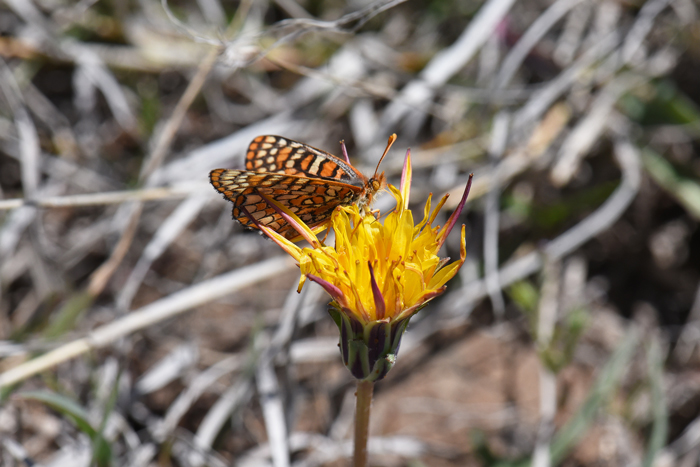
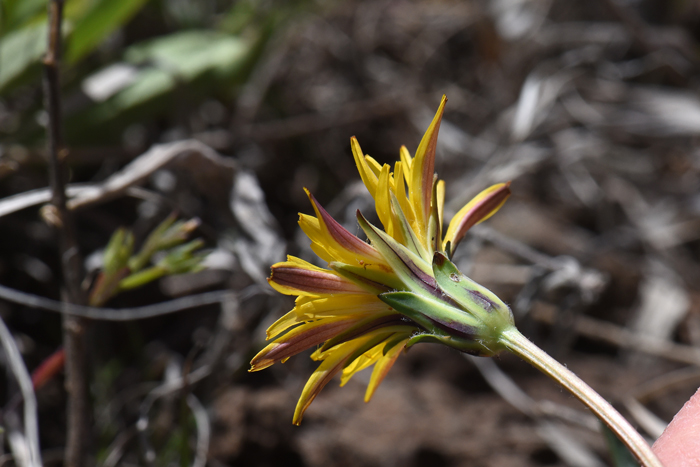
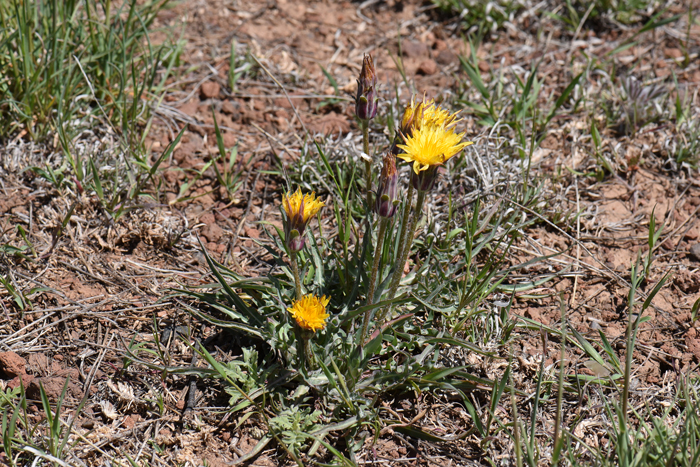
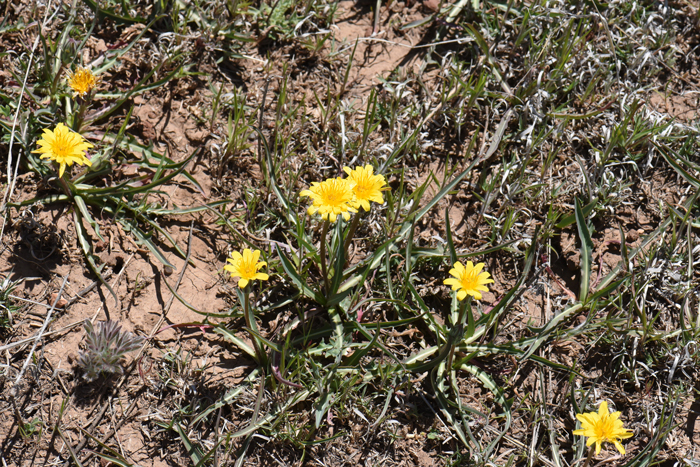
Scientific Name: Agoseris heterophylla
Common Name: Annual Agoseris
Also Called: Annual Goatsbeard, Mountain Dandelion
Family: Asteraceae, Sunflower Family
Synonyms: (Troximon chilense, Troximon heterophyllum)
Status: Native
Duration: Annual
Size: Up to 16 inches (erect, 0-5 cm)
Growth Form: Forb/herb; usually 1 stem; erect, slender taproot; small dandelion-like plant covered in small white-hairy pubescence; plants with milky sap.
Leaves: Light green; leaves spreading or ascending; basal, leaves (rosette), and sometimes stem or cauline leaves; leaf shape variable, often oblanceolate to spatulate and rarely linear; the leaf edges (margins) are usually smooth (entire) or with lobes and the lobes may be pinnatifid, and toothed (dentate); leaves smooth (glabrous) to densely hairy, white-opaque.
Flower Color: Yellow; single (solitary) flower heads; inflorescence of slender scapes (peduncles) which elongate after flowering; bracts surrounding flower heads (phyllaries) are green or rosy-purple and sometimes purple-black spotted or tipped; the corolla yellow; ligulate flowers only, florets 5 to 100 or more; fruit is a cypsela with a pappus of white bristles like a dandelion.
Flowering Season: March, to May, June, July, August and September
Elevation: 2,500 to 5,000 feet (762-1,524 m)
Habitat Preferences: Open areas in higher elevations, grassy hillsides on openings in brush, drier habitats in the plains, mesas and canyons.
Recorded Range: Agoseris glauca is found in the western United States and British Columbia: In the United States in AZ, CA, CO, ID, MT, NM, NV, OR, UT and WA.
North America & US County Distribution Map for Agoseris heterophylla.
North America species range map for Annual Agoseris, Agoseris heterophylla:
North American range map courtesy of Virginia Tech, Dept. of Forest Resources & Environmental Conservation
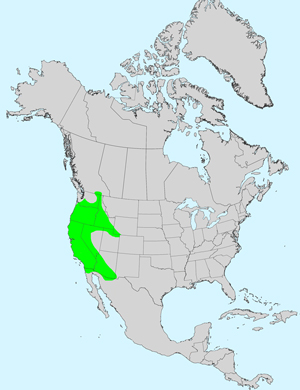
U.S. Weed Information: Unknown
Invasive/Noxious Weed Information: Unknown
Wetland Indicator: Unknown
Threatened/Endangered Information: Unknown
Genus Information: In North America there are 10 species and 10 accepted taxa overall for Agoseris. World wide, The Plant List includes 15 accepted species names and includes a further 72 of infraspecific rank for Agoseris. Common names for this genus are Mountain Dandelion and False Dandelion.
The genus Agoseris was published in 1817 by Constantine Samuel Rafinesque-Schmaltz, (1783–1840).
In the Southwestern United States: Arizona and New Mexico each have 3 species of Agoseris, California has 8 species, Nevada has 6 species, Texas has 0 species, Utah has 5 species. Data approximate, subject to revision.
There are 6 varieties in Agoseris heterophylla;
Agoseris heterophylla var. crenulatas, Annual Agoseris, (CA, OR)
Agoseris heterophylla var. heterophylla, Annual Agoseris, (AZ, CA, CO, ID, MT, NM, NV, OR, UT, WA; BC)
Agoseris heterophylla var. turgida, Annual Agoseris, (CA, OR).
Comments: Annual Agoseris is not a desert species. It is included here because it is common and might be encountered. It belongs to a small genus of plants with rosette leaves and resembling the common dandelion with their similar yellow flowers and puff ball seed heads. Adding to confusion are the common names for Agoseris such as Mountain- and False-Dandelion. (See Common Dandelion, Taraxacum officinale.
Annual Agoseris is one of 3 species of Agoseris native to Arizona which also includes Pale Agoseris, Agoseris glauca, and Orange Agoseris, Agoseris aurantiaca.
The genus Agoseris was published in 1817 by Constantine Samuel Rafinesque-Schmaltz, (1783–1840).
The specific epithet, heterophylla (heterophyl'la/heterophyl'lum/heterophyl'lus:) means that the leaves are different on the same plant.

